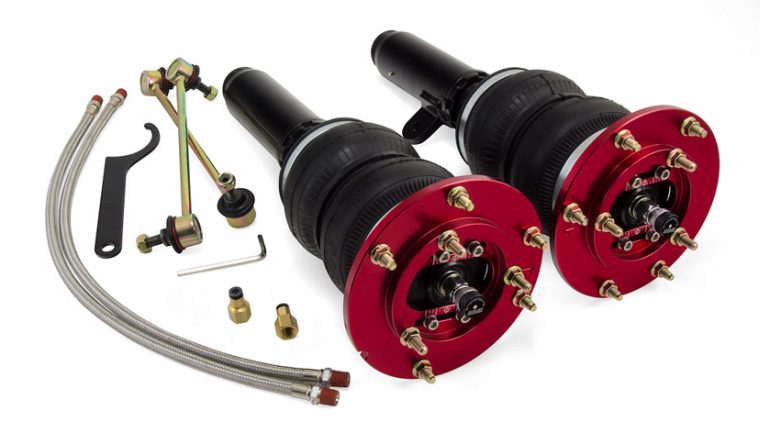Enhance Your Euro with Aftermarket Air Bag Suspension: A Quick Guide
If you’re looking for ways to improve your Audi, BMW or VW’s handling, ride quality, and appearance, aftermarket air bag suspension systems might be the perfect solution. These systems have become increasingly popular among car enthusiasts and those seeking a more comfortable and customizable driving experience. In this blog post, we will explore what aftermarket air bag suspension is, how it works, and how to install it in your vehicle.
An aftermarket air bag suspension system is an upgrade to a vehicle’s suspension that replaces traditional coil springs or leaf springs with inflatable airbags. These systems offer numerous benefits, including improved handling, enhanced comfort, and a customizable ride height.
Benefits of aftermarket air bag suspension
- Improved handling and stability: Air bag suspension systems provide better handling and stability by distributing weight more evenly across the vehicle. This can reduce body roll and improve cornering abilities.
- Enhanced comfort and ride quality: Airbags absorb road vibrations more effectively than traditional suspension components, resulting in a smoother, more comfortable ride.
- Load leveling and towing capabilities: Air bag suspension systems can automatically adjust to accommodate varying loads, preventing sagging and improving towing performance.
- Customizable ride height: You can adjust the height of your vehicle to suit your preferences or driving conditions, improving both aesthetics and performance.
How does an aftermarket air bag suspension system work?
Aftermarket air bag suspension systems are composed of several components that work together to provide a comfortable and controlled ride.
- Airbags: Inflatable bags made from durable rubber or synthetic materials that replace traditional coil or leaf springs.
- Air compressor: Provides the compressed air necessary for inflating and deflating the airbags.
- Air reservoir: Stores compressed air, allowing for rapid changes in airbag pressure.
- Solenoid valves: Control the flow of compressed air to and from the airbags.
- Electronic control unit (ECU): Monitors and adjusts the air pressure in the bags according to the driver’s preferences or road conditions.
- Height sensors: Provide feedback to the ECU, ensuring the correct ride height is maintained.
The airbags in an air bag suspension system inflate and deflate to adjust the vehicle’s ride height. Compressed air is delivered to the airbags via solenoid valves, while height sensors provide feedback to the ECU. The ECU adjusts the air pressure in the bags according to the driver’s preferences or road conditions, ensuring a smooth and controlled ride.
Installation process
- Safely raise and secure your vehicle.
- Remove the stock suspension components.
- Install the airbags, brackets, and hardware.
- Mount and connect the air compressor, air reservoir, and solenoid valves.
- Install the ECU and height sensors.
- Connect all electrical components and run air lines.
- Test the system for leaks and proper functionality.
After the installation,
it’s essential to address a few post-installation aspects to ensure the proper functioning and longevity of your air bag suspension system.
- Alignment and suspension tuning: After installing your new air bag suspension system, it’s crucial to have your vehicle’s alignment checked and adjusted if necessary. This will ensure optimal handling and prevent uneven tire wear.
- Regular maintenance and inspection: Like any other vehicle component, air bag suspension systems require regular maintenance and inspection to ensure they remain in good working order. Check for any signs of wear or damage to the airbags, lines, and other components. Additionally, make sure to monitor the air pressure in the system and adjust as needed.
Aftermarket air bag suspension systems offer numerous benefits to vehicle owners, including improved handling, increased comfort, and customizable ride height. With the right tools, preparation, and understanding of the installation process, you can transform your vehicle’s performance and appearance by adding an air bag suspension system. By maintaining your new suspension system properly, you’ll enjoy a smoother, more controlled ride for years to come.


